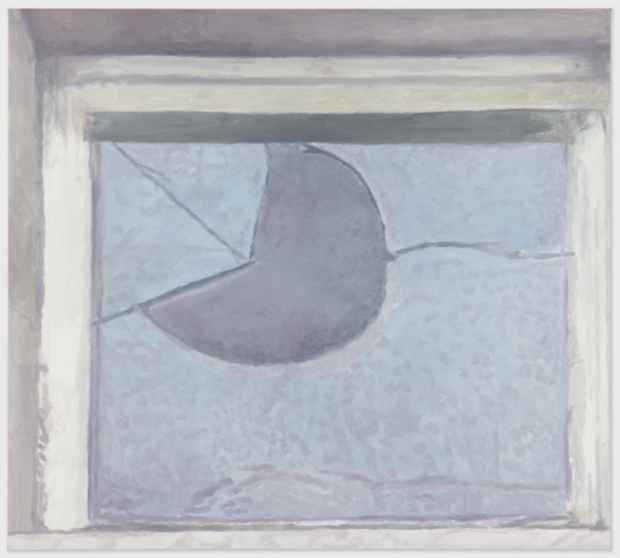Luc Tuymans "The Summer is Over"
David Zwirner 19th Street

This event has ended.
In his tenth show at David Zwirner, Belgian painter Luc Tuymans shows all new works. The Summer is Over was originally planned to be on view in November-December 2012, but due to Hurricane Sandy, it was reschedule to January 2013.
Since 1994 when Luc Tuymans had his U.S. debut at David Zwirner’s original location in SoHo, the artist has presented exhibitions at the gallery, every two years, premiering a new, thematic series of paintings. 2012-2013 marks an exception: the artist has two consecutive exhibitions: Allo! for David Zwirner’s new London gallery (October – November 2012) and The Summer is Over for New York (January – February 2013).
Tuymans is widely credited with having contributed to the revival of painting in the 1990s. His sparsely colored, figurative works speak in a quiet, restrained, and at times unsettling voice, and are typically painted from pre-existing imagery which includes photographs and video stills. His canvases, in turn, become third-degree abstractions from reality and often appear slightly out-of-focus, as if covered by a thin veil or painted from a failing memory. There is almost always a darker undercurrent to what at first appear to be innocuous subjects: Tuymans has, in this way, explored diverse and sensitive topics including the Holocaust, the effects of images from 9/11, the ambiguous utopia of the Disney empire, the colonial history of his native Belgium, and the phenomenon of the corporation.
The Summer is Over occupies an unusual place within Tuymans’s career in that it does not take its point of departure in a broader cultural or political context. Rather, the works in the new series depict the artist’s immediate surroundings, and interior views of his home and a rare self-portrait are complemented by views of buildings he walks past every day on the way to his studio. Yet unfamiliar perspectives and the simulation of other media—the paintings are based on photographs—restrict biographical insights into the artist’s life.
The opaqueness that characterizes the works is particularly apparent in Morning Sun (2011), the first painting Tuymans created for the exhibition. Showing a window from across the street, the off-center composition reveals no reflected sunlight as otherwise hinted at by the title, but shows an impenetrable façade of dusty, cracked glass. In turn, it draws attention to the surface of the canvas and its intrinsic flatness.
Windows and façades are featured in several of the paintings and light, whether direct or reflected, plays an important part, sometimes bleaching out details or otherwise obscuring a straightforward reading of the subject matter. The dramatic contrast between brightness and shadow in Wall (2011), for example, makes it difficult to decipher the actual composition. What at first appears to be daylight streaming in from a window is an electronic image projected onto a wall, showing footage from a Super 8 film the artist made in the 1980s of an abandoned seaman’s hotel. As Tuymans’s painting is based on a photograph of the film screening, several media representations of light are conflated at once.
Me (2011) depicts Tuymans himself seated in a large chair adjacent to a wall. A glimpse of the room is offered in the background, with a large radiator taking up most of the view. Illuminated from behind, the artist appears passive and inattentive, and his gaze, almost masked by the reflections on his glasses, seems to slightly miss the viewer’s. Based on a photograph taken by his wife, the artist Carla Arocha, this is not the first time Tuymans’s figure makes its way into a composition—his shadow or reflection is sometimes discernable in his paintings—but his direct, frontal presence is unusual. Yet the intimacy that typically accompanies the genre of self-portraiture is altogether lacking and the larger-than-life-sized portrait rather reminds us of the disappearance or nonexistence of an original source within today’s image-saturated society.
My Leg (2011) underscores the inherent futility of seeking to deduce biographical details from the works in the show, showing a fragment of the artist’s leg that appears more abstract than figurative. The illusory nature that characterizes the history of the medium is not only refuted but turned inside out, as the paintings gradually divulge their subjects only to conceal them at the moment of their revelation.
Born in 1958 in Morstel, near Antwerp, Belgium, Luc Tuymans was one of the first artists to be represented by David Zwirner. He joined the gallery in 1994 and had his first American solo exhibition that same year.
The artist’s work was recently the subject of a retrospective co-organized by the Wexner Center for the Arts, Columbus, Ohio, and the San Francisco Museum of Modern Art. It traveled from 2010 to 2011 to the Dallas Museum of Art; Museum of Contemporary Art Chicago; and the Palais des Beaux-Arts, Brussels. Previous major solo exhibitions include those organized by the Moderna Museet Malmö, Sweden, in 2009, and Tate Modern, London, in 2004. Other recent solo exhibitions include the Centro de Arte Contemporáneo de Málaga, Spain (2011); Haus der Kunst, Munich; Zache ̨ta National Gallery of Art, Warsaw (both 2008); Mu ̋csarnok Kunsthalle, Budapest (2007); Museu Serralves, Porto, Portugal; and the Musée d’art moderne et contemporain, Geneva (both 2006). The artist represented Belgium at the 49th Venice Biennale (2001) and his works are featured in museum collections worldwide.
Media
Schedule
from January 10, 2013 to February 09, 2013
Opening Reception on 2013-01-10 from 18:00 to 20:00